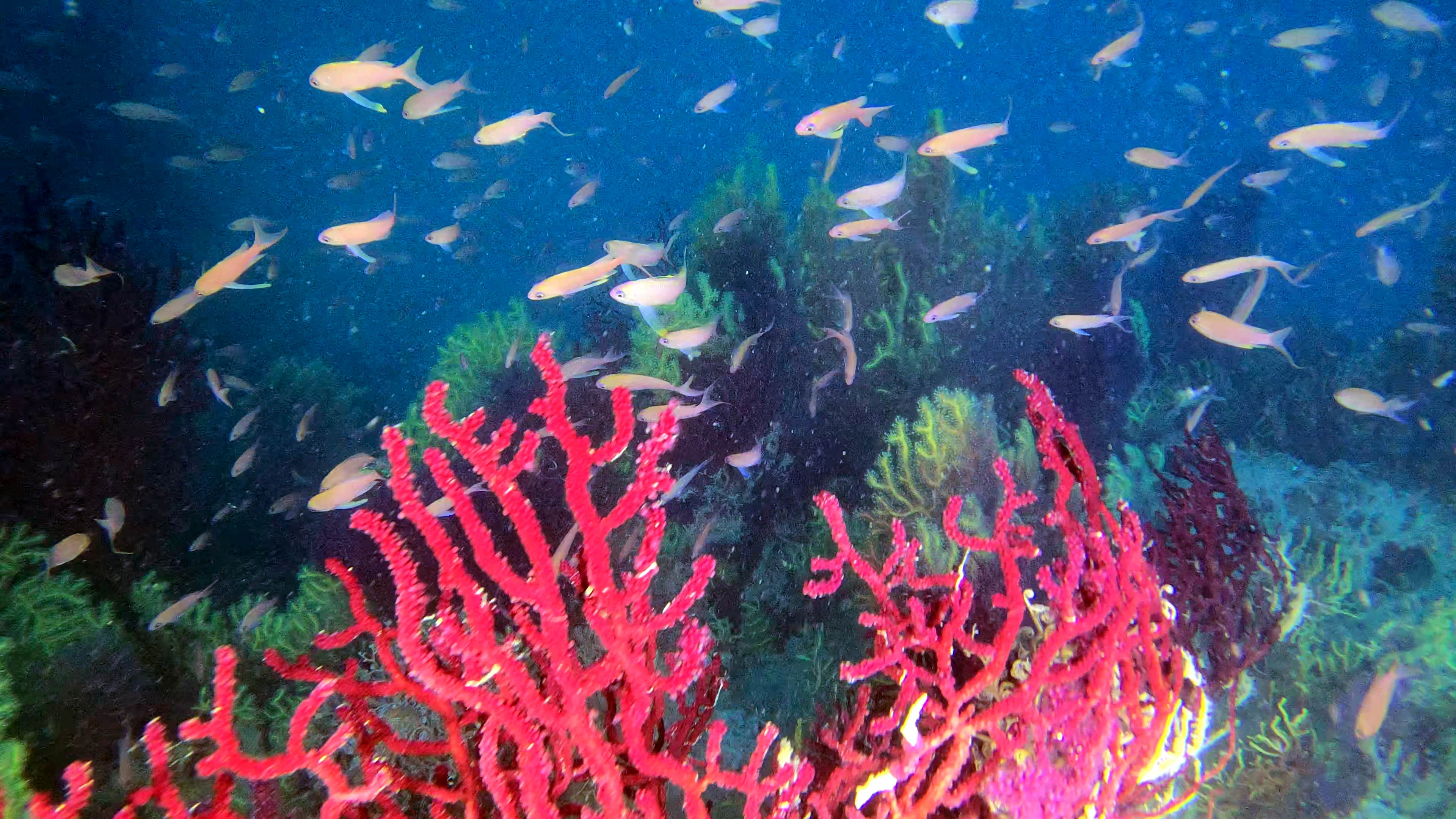Red gorgonian - Paramuricea clavata
Paramuricea clavata, the violescent sea-whip, is a species of colonial soft coral in the family Plexauridae. It is found in shallow seas of the north-eastern Atlantic Ocean and the north-western Mediterranean Sea as well as Ionian Sea. This species was first described by the French naturalist Antoine Risso in 1826.

Gorgonia Rossa Paramuricea Clavata Red Gorgonia cnidari cnidarian
Description
It looks like a treelike formation with dense ramifications of dark red color, which fans form that can reach sizes of up to a meter in height. The terminal branches, claviform, are sometimes of yellow color. The skeleton is protein; the surface presents calcareous spicules that serve as shelter for polyps, retractable.
The colonies have the appearance of a real submerged wood, between the branches of which develops a remarkable biodiversity, it consists of every sort fish and invertebrates. Gorgonia Rossa Paramuricea Clavata Red Gorgonia cnidari cnidarian

Distribution and habitat
It is a typical species of the Mediterranean Sea where populates rocky bottoms usually deep from 25-30 to over 100 meters, placing the emphasis on little crevices reached by the light. It is in fact a kind sciaphilous, that lover of twilight.

Storage
The IUCN Red List classifies Paramuricea clavata as a vulnerable species. In the past, red gorgonian colonies were very numerous, today we are witnessing their decline throughout the Mediterranean, especially in surface waters as a result of water heating. Other factors that threaten its survival are the indiscriminate collection by divers, and the damage inflicted by trawling. It is a very fragile and very slow growing species. By virtue of these characteristics it is considered a biological indicator of the balance of the marine ecosystem.
Gallery
Video Gallery
Red Scorpionfish of Mediterranean Sea on Violescent sea-whip

